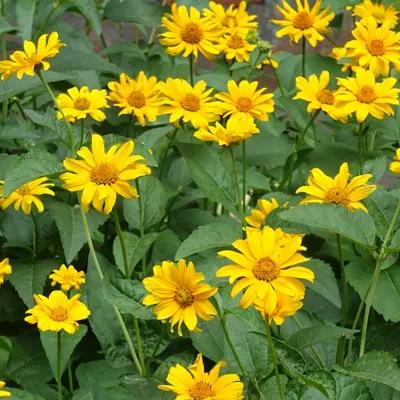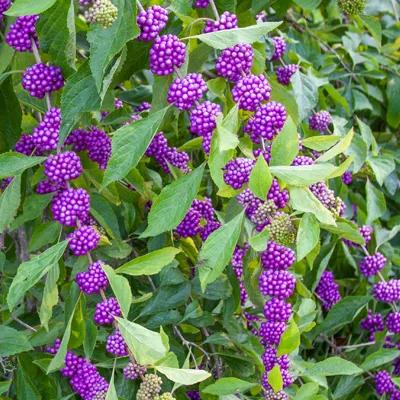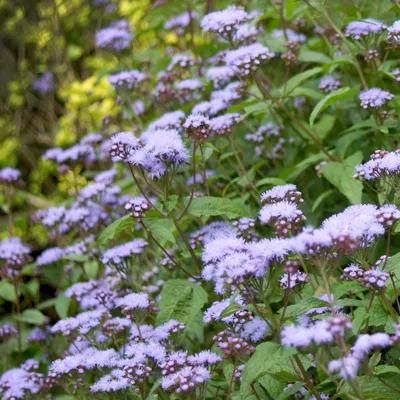Fabulous Fall-Blooming Plants
Fall in the garden can be more than just mums and pumpkins
You are probably used to designing your garden with flower color and plant size in mind, but have you considered bloom season? Many perennials and shrubs explode to life in the spring (peonies! irises! azaleas!), but what does your garden look like come autumn? Fall-blooming plants bring visual beauty during a time when the rest of the garden is dwindling. More importantly, they are a vital source of food for pollinators as they prep for winter migration.
8 Native Plants That Bring Fall Color

Muhly Grass (Muhlenbergia capillaris)
Think grass is boring? Think again. Airy pink Muhly grass sports wispy white seed heads that that deepen to a rosy pink in the fall — planted en masse, it's definitely a striking complement to fading summer flowers and greens. Native to southern landscapes, pink Muhly grass thrives in warm, dry conditions, and can handle drought in a stride.
Hardy in zones 6-10

Turtlehead (Chelone spp.)
Spires of snapdragon-like pink or white flowers emerge from this perennial in early fall and are irresistible to bees and hummingbirds. Turtlehead prefers light shade and rich, moist soil, making it an excellent addition to woodland borders or rain garden edges.
Hardy in zones 3-8

New England Aster (Symphyotrichum novae-angliae)
This rugged native plant lights up the fall garden with brilliant purple flowers. New England aster is a hardy plant that thrives in full sun and moist soil. Native asters are an important source of nectar for several butterfly species, including the Monarch, as they begin their migration south — plant these with black-eyed Susans and yarrow for a gorgeous purple and gold pollinator garden.
Hardy in zones 4-8

False Sunflower (Heliopsis helianthoides)
This 2-5 -foot tall stunner bursts into cheery yellow blooms in mid summer, and continues blooming through the fall. Also called Ox-eye sunflower, this drought-tolerant perennial will happily self-sow on open soil, making it the perfect candidate for a meadow or naturalized area.
Hardy in zones 3-9

Switchgrass (Panicum virgatum)
An important prairie grass, switchgrass is found all over North America in a variety of habitats. Narrow green leaves turn a warm golden yellow in the fall and then fade to tan, providing fantastic winter interest. A tall, clumping grass that can easily grow more than 4 feet in height, switchgrass can easily be planted as an attractive privacy screen, used to stabilize tricky slopes, or added to mixed container plantings.
Hardy in zones 3-9

American Beautyberry (Callicarpa americana)
The name says it all — this deciduous shrub produces clusters of small white flowers in the spring that turn to brilliant violet-hued berries in the fall; the berries are an important food for birds and wildlife. Beautyberry prefers well-drained soils and full sun to part shade. Use as an eye-catching foundation planting with evergreen shrubs and
Hardy in zones 6-10

Blue Mistflower (Conoclinium coelestinum)
With small clusters of fuzzy periwinkle flowers bloom from July through late October, blue mistflower closely resembles the annual Ageratum. It thrives in wet, rich soils in full to part sun, and attracts tons of butterflies, bees, and moths. Blue mistflower is an aggressive self-seeder and as such, recommended for large mass plantings, naturalized areas, or streambank gardens.
Hardy in zones 5-9

Hardy Hibiscus (Hibiscus moscheutos)
Also called rose mallow, this North American native perennial shrub is just as flashy as tropical hibiscus, but is hardy enough to grow in cold-climate gardens. Hardy hibiscus is slow to emerge in the spring, but blooms prolifically in late summer through first hard frost in shades of white, pink, and burgundy. Plant in full sun as a focal plant anywhere in the landscape or container.
Hardy in zones 4-9
Print this Article:
Get the Dirt
Stay up to date on new articles and advice. Please fill out the information below.

